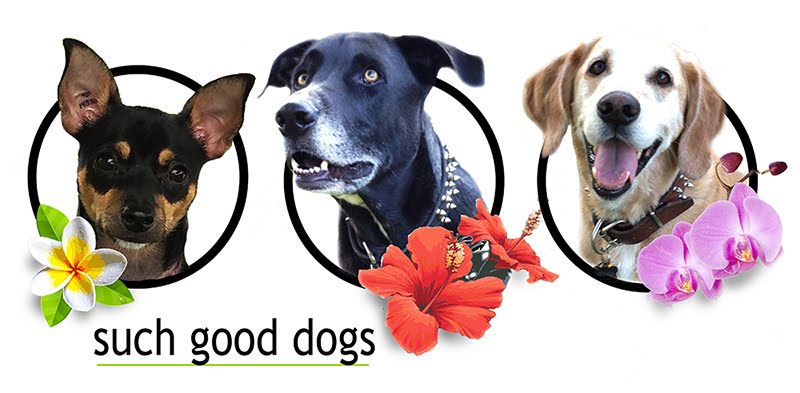For this month's Trainer Tips, I would like to talk about Dog Backpacks and how they might be able to help you and your dog.
A dog backpack is pretty much what you think it would be...a backpack that is fitted for your dog. Dog backpacks come in many different styles and brands.
In choosing a dog backpack, look for a style and color that speaks to you. The main thing you will want to look for is to make sure that the pouches of the bag do not hang too low on the sides of the dog. Some dog packs are not made appropriately and hang too low. This makes it difficult for your dog to walk properly. A dog backpack that is fitted well will not hinder your dog when walking.
My personal favorite brand of dog backpacks is
Ruff Wear. Although they no longer carry the bags we have, they products are amazing and last long. Our dog packs are at least 6 or 7 years old and I have not had any issues with them. They are in great condition for that many years, and we use them quite often.
Of course your local pet store will have other options as well. It is best to try and bring your dog to the store so you are able to try on the bags to see how they fit. You may even do this just to get a good idea of what you like, then measure your dog and order online.
Why use a backpack on my dog?
There are many reasons to add a backpack to your dog for your daily walks. If your dog is very high energy or tends to be quite reactive to people or other dogs in public, adding a backpack can help keep your dog more calm (therefore making it easier to train your dog in these situations). I highly recommend adding a backpack to any dog that is very high energy. If you have a hard time wearing your dog's energy out on a daily basis, adding a backpack on your daily walks can help expel some of that excess energy.
When adding a backpack to a dog, it helps puts their brain in a "working mode." This helps focus the dog on the task at hand (walking calmly while carrying the bag). Add water bottles for weight, but be sure to keep the weight as even as possible on both sides.
Both my larger dogs have dog backpacks. Caravaggio is a certified service dog and has accompanied me with his backpack into stores and other public places. He carries my items in his bag and I add anything purchased to the bag for him to carry as well. Service and therapy dogs are known to carry bags to assist their owners. But just because your dog is not certified as a service dog, does not mean he can't carry things for you. We also add the backpacks to our dogs when we go on long hikes or for a long outdoor day event such as a parade or swap meet. Going to the beach for the day? You can have your dog carry all the things they need for the beach in their own bag! (water, leashes, bowl, poop bags, etc.)
This is Rayne, a service dog.
Her backpack is small and includes Service Dog tags,
but is still a dog backpack. While she is wearing her bag,
she is in "working mode."
Dog Backpack = Magic
All in all, adding a backpack to your high energy or reactive dog can work like magic to calm them down. There is training that should accompany you adding the backpack to your dog. As with any new items, when first putting it on your dog, it should be paired with a treat or something the dog likes so as to make it a very positive experience. Put the bag on and tell your dog "Good!" while giving them a treat. If they remain calm, praise and treat. Disagree with any behavior to try and get the bag off or scratch at it. The first time you put the bag on the dog, only leave on for a few minutes.
Once your dog seems mostly comfortable with the bag, add it before going for your regular walk. Have the bag pre-packed with a small amount of weight to start (you can add more as your dog gets used to it). I even throw my roll of poop bags in the backpack pouch.
REMEMBER: While wearing the backpack your dog should be in a "working" mind set. Therefore the dog should not be allowed to play or run wild off leash while wearing the bag. Remove the bag and give your dog their Release Cue before allowing these activities. While wearing the bag, the dog should be required to remain calm and in the "working mode" mind set.
This is Hazel.
She is a VERY high energy, 2-year-old Shepherd mix.
Hazel and her mom have been working with SGDs
on her dog aggression and reactiveness on the leash.
Adding a backpack has helped calm Hazel on walks...
she is becoming less and less reactive to other dogs and objects.















































